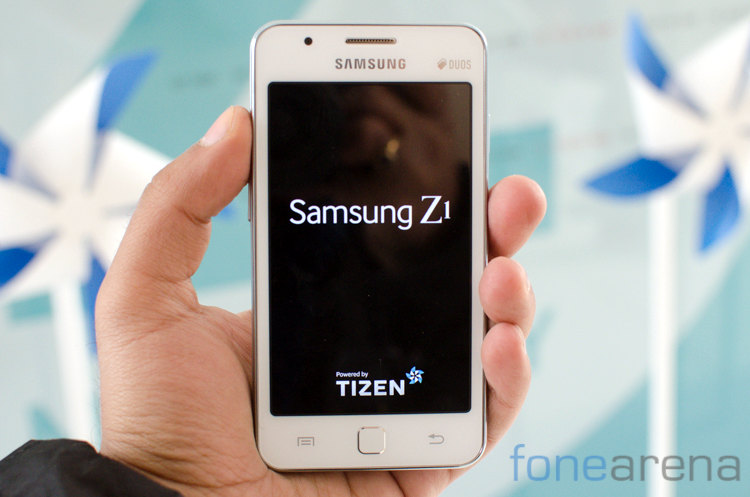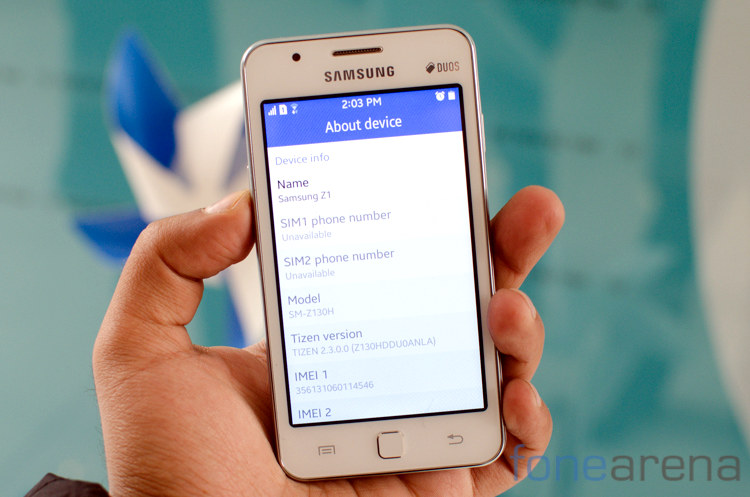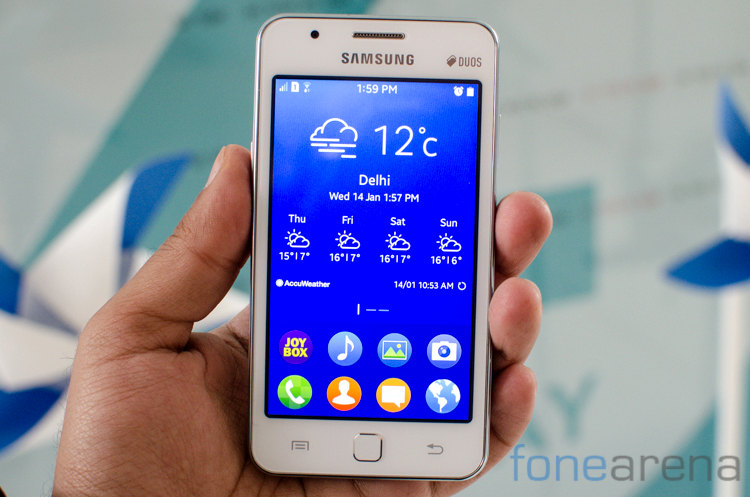
Tizen has long been considered as a possible competitor to Android but it was practically dead in the water till the time rumors of a Tizen based smartphone emerged. Its been a long while coming and today, Samsung finally revealed the Z1 as a budget minded handset that takes a departure from the familiar territory of Android based low end devices. Is it any good and more importantly do we foresee the competition to be hit hard? That’s something we’ll try to answer in the text below.

The handset carries the design language that is standard across Samsung devices. It is nigh impossible to call the design fresh but it is unmistakably Samsung. The front of the phone has a 4inch WVGA display with a PLS panel. The screen looks good and is reasonably viewable even in brightly lit scenarios. We found viewing angles to be quite good. Below the display is a single hardware home button which is flanked by two capacitive buttons that correspond to menu and back. The button configuration and front fascia of the phone will be familiar to anyone who has used a Samsung Android device.
Moving on to the sides of the devices, you can see that handset is relatively barebones when it comes to buttons and ports. There’s a volume rocker on the left side while the right side sports the power button. A micro USB port is at the bottom of the phone while the 3.5mm audio jack is placed up top.

Over at the back we find that the spartan design continues. While minimalist, it is certainly clean and looks reasonably high end. A 3.1MP fixed focus camera is nestled here alongside a speaker and a single LED flash. On paper, this camera is woefully bad but we’ll see how it performs in our full review.

Moving on to the internals, this is a Dual SIM phone as you’d expect but the slots are not hot swappable as you’ll need to remove the 1500mAh battery to access them. A microUSB slot supplements the 4GB of built in storage of which under 2GB is available. Powering the device is a 1.2 GHz dual-core Spreadtrum SC7727S processor with Mali 400 GPU which seems to powerful enough to keep the OS putting along lags and has enough steam to allow for fluid animations and transitions. Will it be sufficient once you load up the handset with apps and games? That’s something we’ll find out over the course of our review.

The hardware is hardly the differentiating factor in the Samsung Z1. The company has bet big on Tizen as it aims to gradually break itself away from Google’s Android operating system. Having direct end to end control over the software and hardware on its devices is in it’s own benefit and Tizen is Samsung’s bet at achieving just that. Brief interaction isn’t enough for conclusive decisions but we really believe that there’s a long way to go before Tizen can hope to compete with other mature operating systems. While basic functionality is there and is surprisingly fluid, there’s precious little in terms of third party apps with the majority being bookmarks to the websites.

Priced at Rs. 5,700, the Samsung Z1 brings a decently built handset with not so competitive hardware and a completely unproven operating system. The Korean company has it’s work cut out for it as it attempts to make a dent into a market dominated by Android One runnings offerings from Micromax, Spice, Karbonn and others on one hand and the likes of Xiaomi too trying to carve it’s own niche. It will definitely be an uphill battle but there’s a lot to be won by winning the war for first time smartphone buyer mindshare. We don’t think the Tizen running Samsung Z1 is quite there yet.



